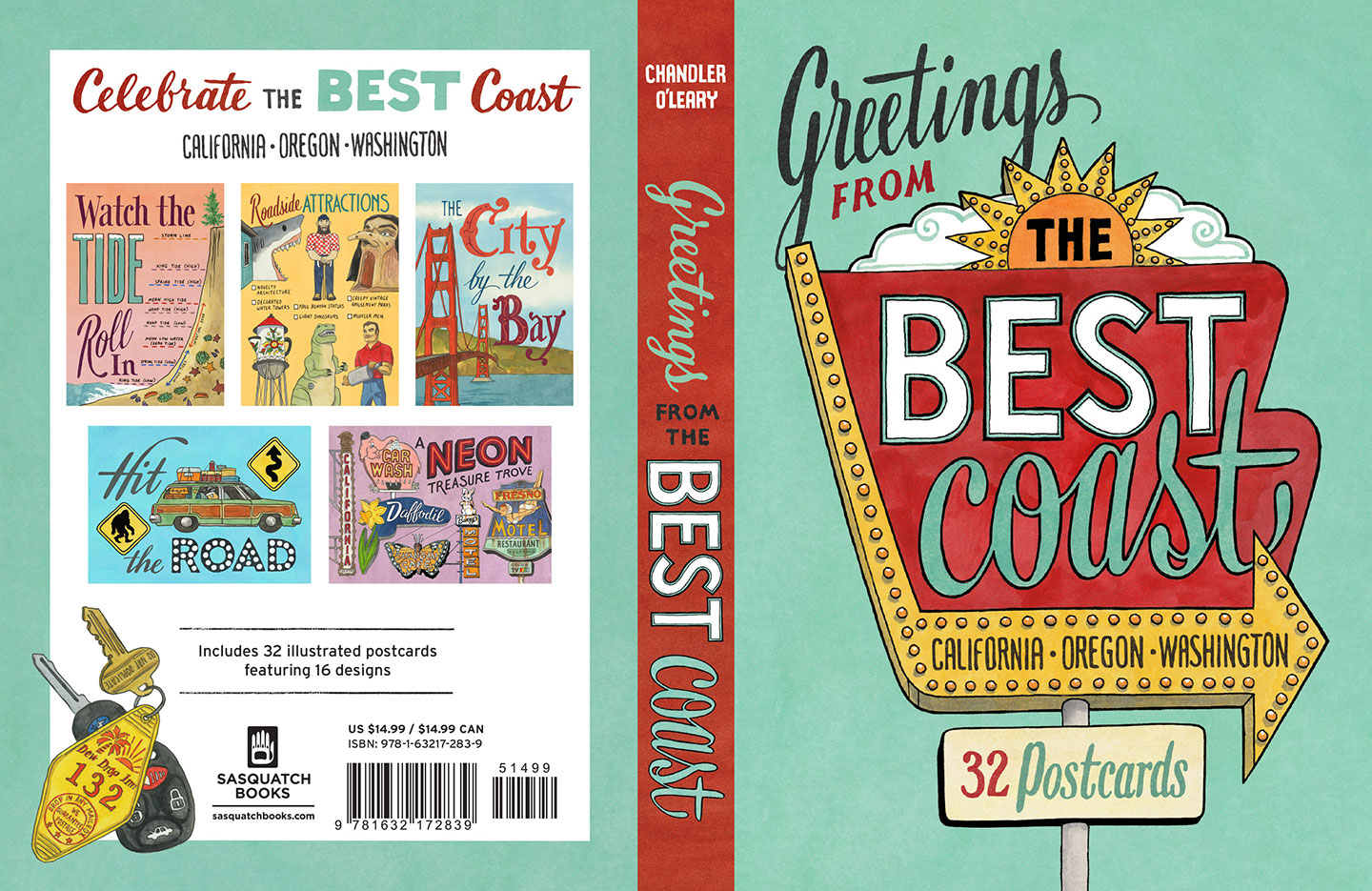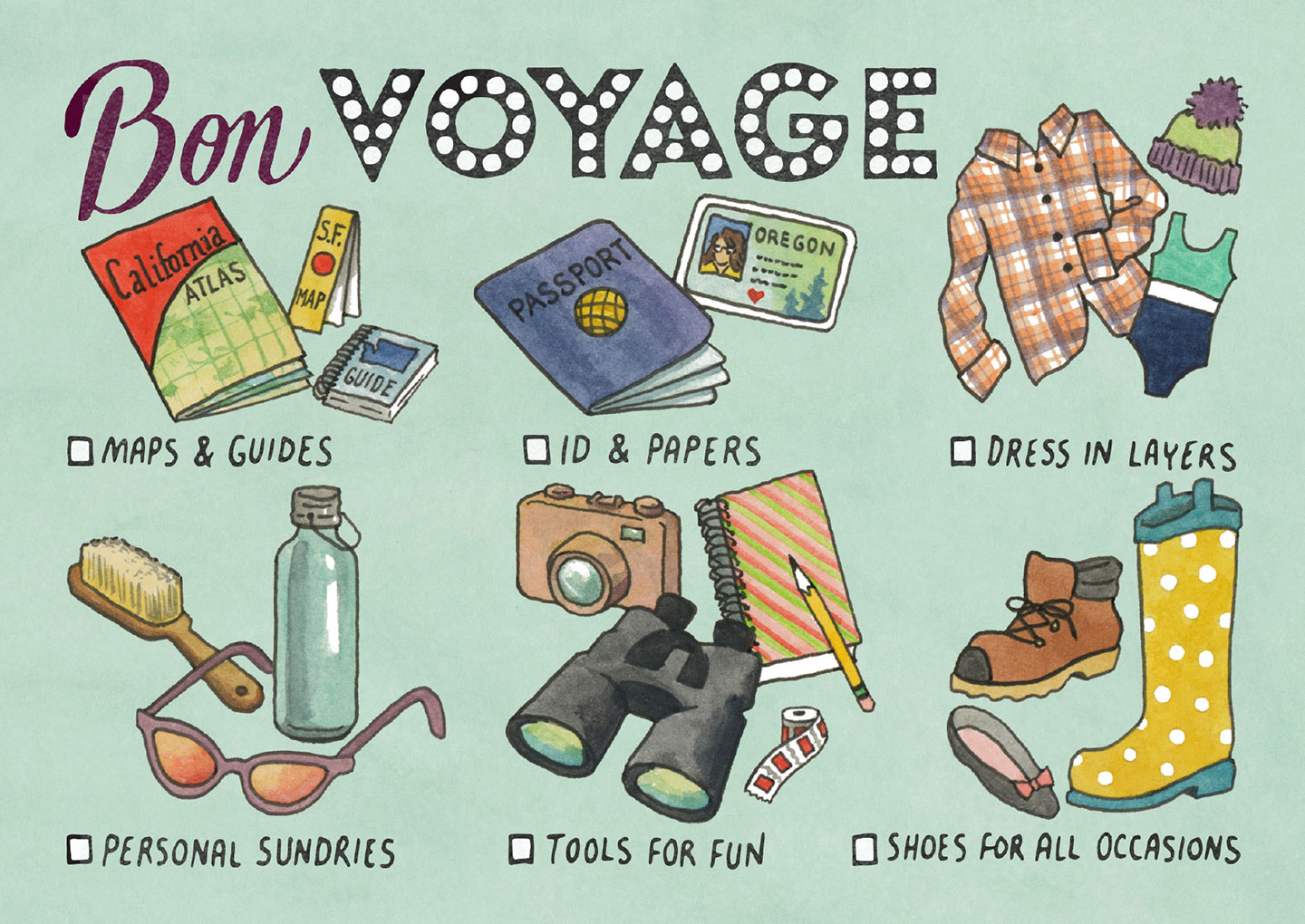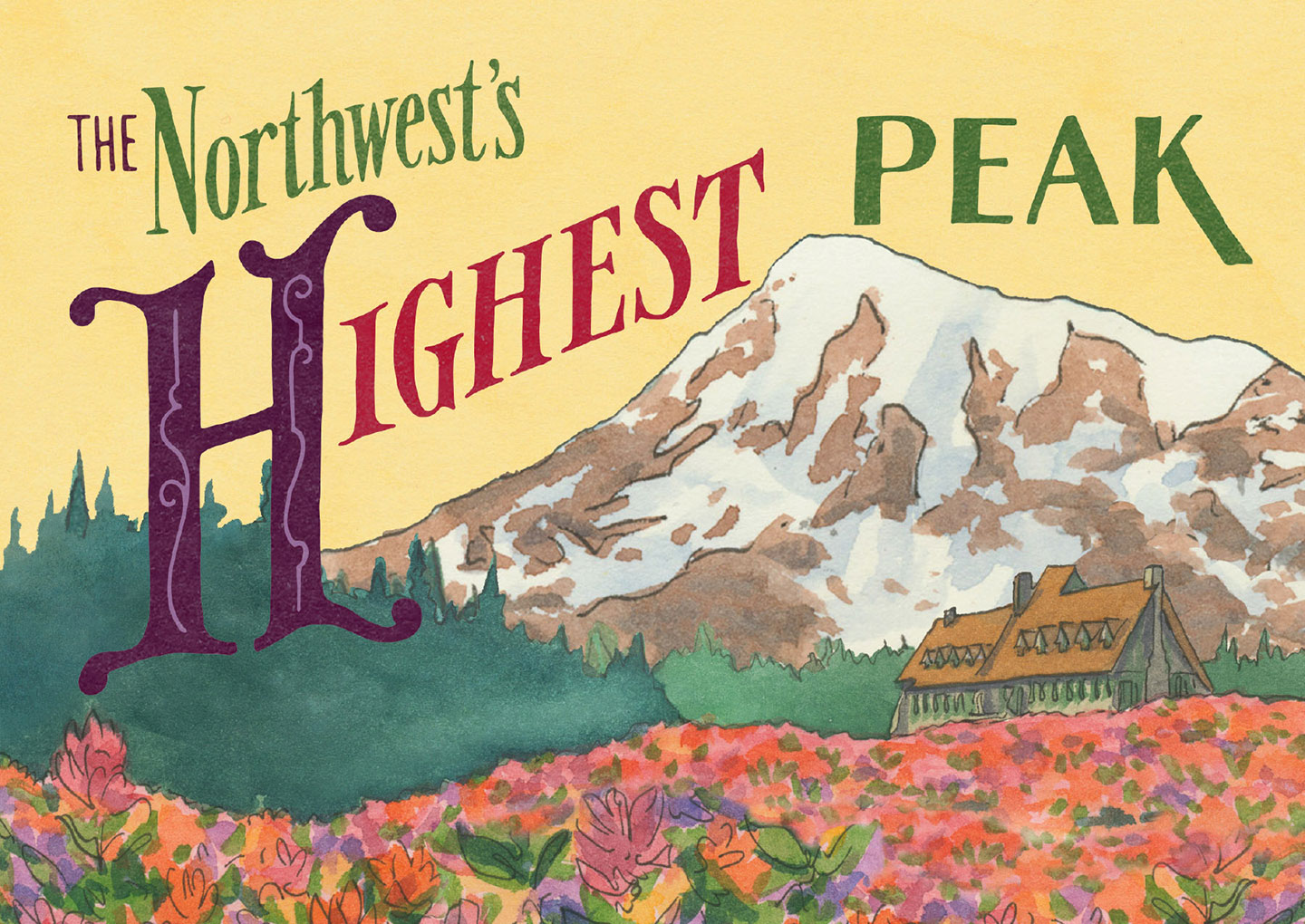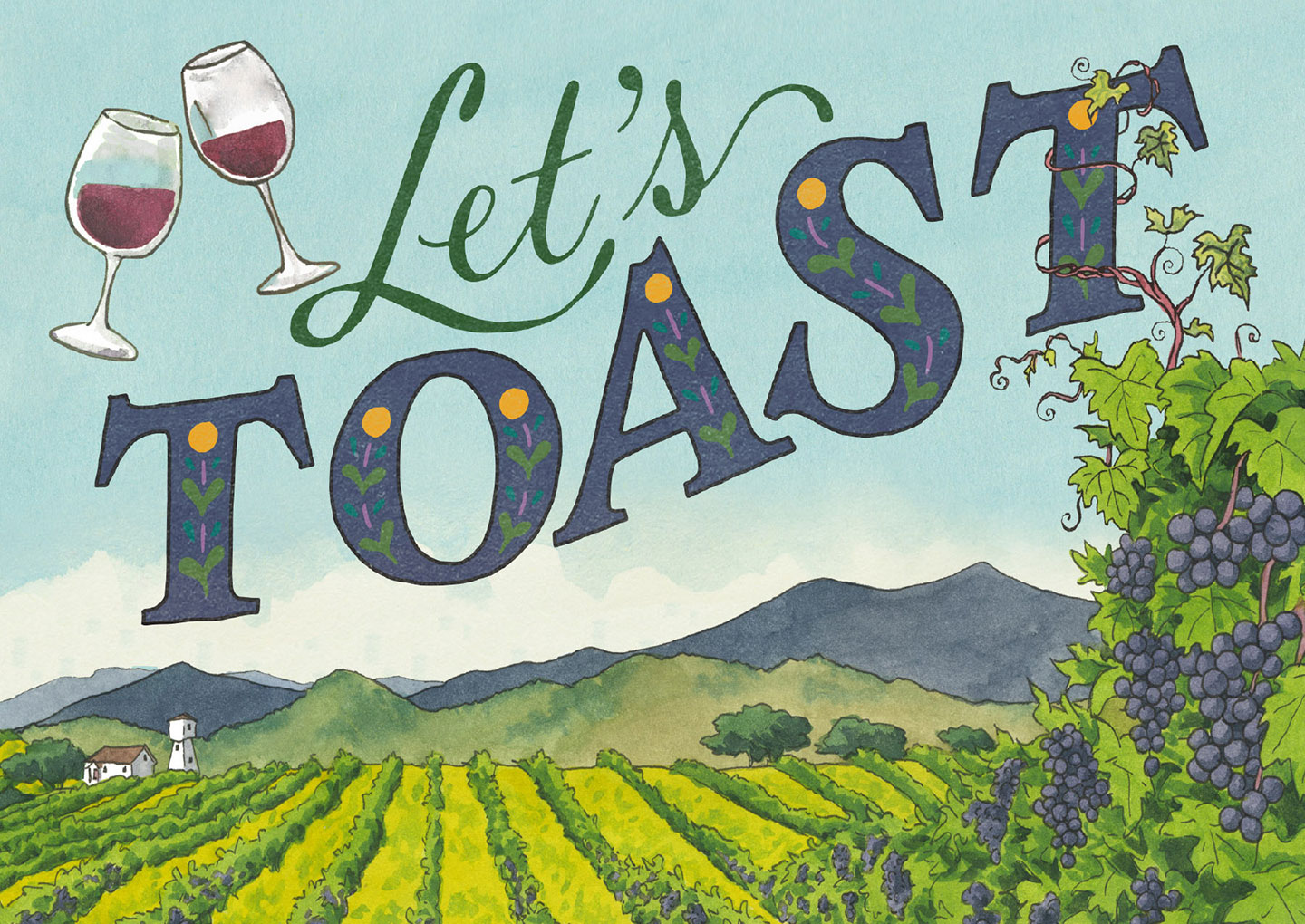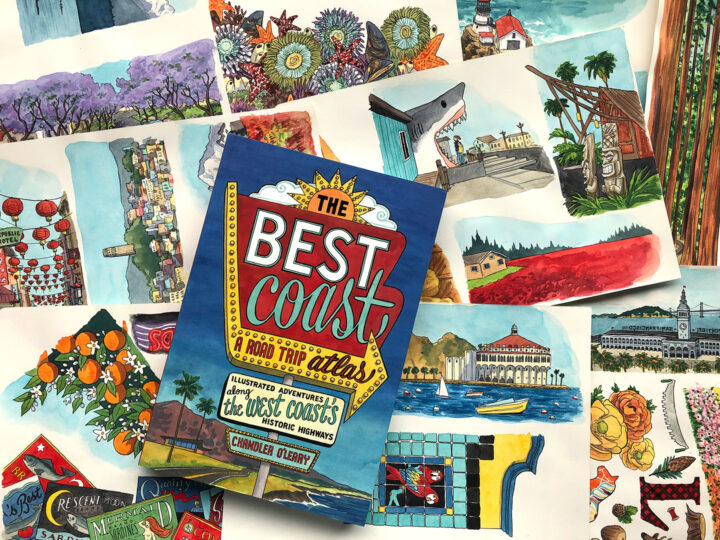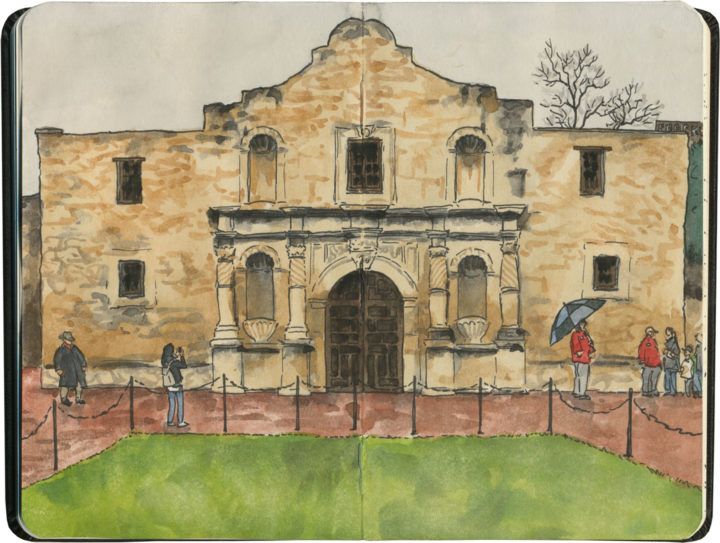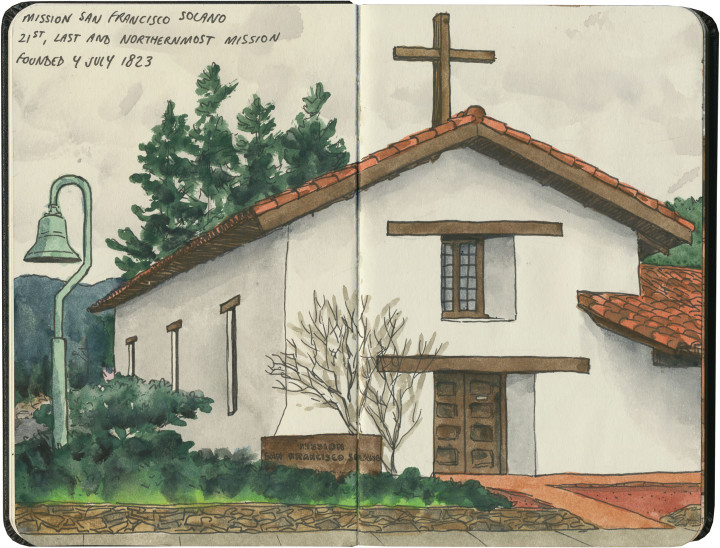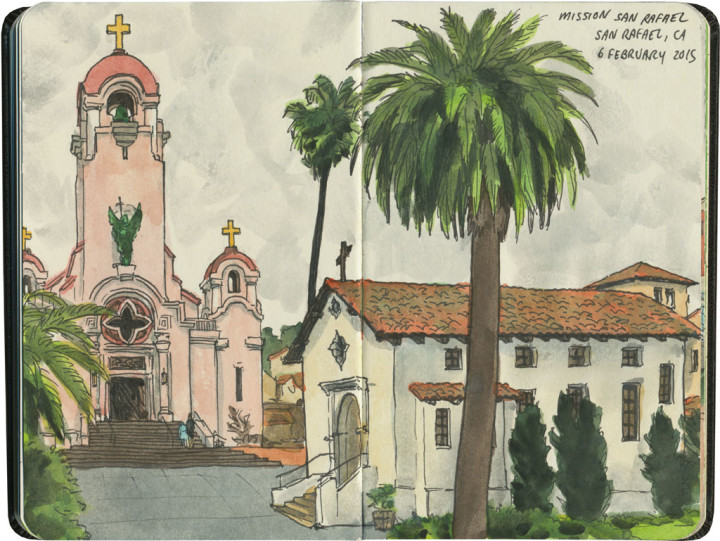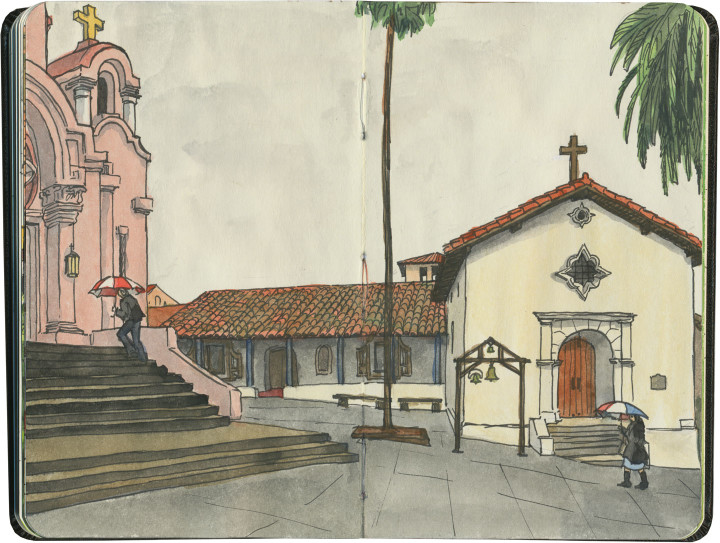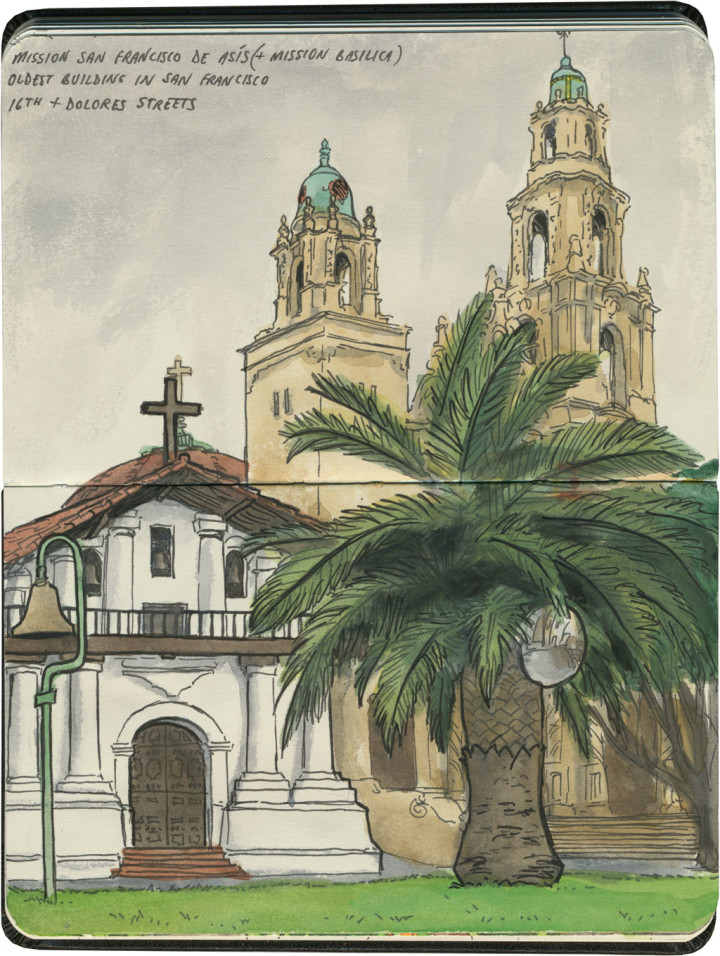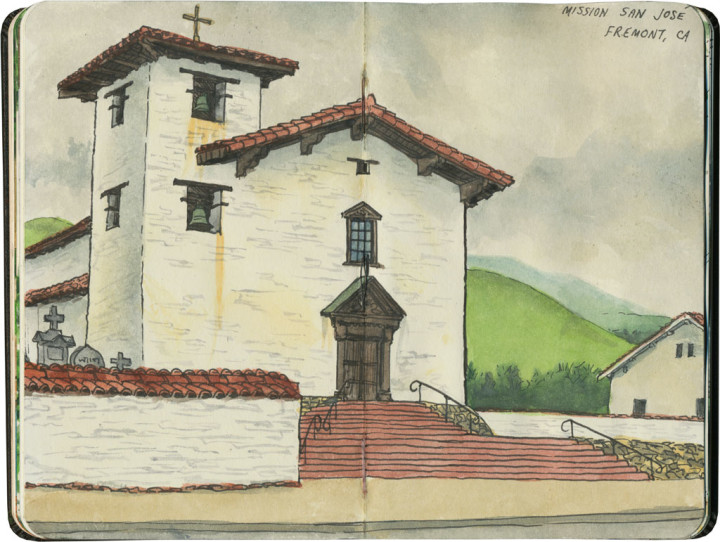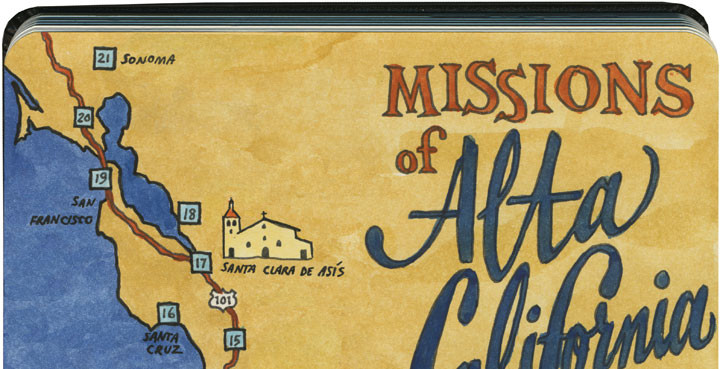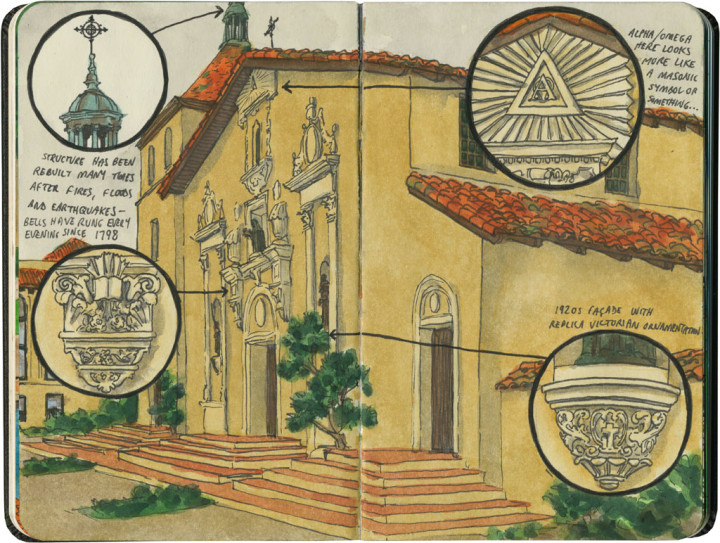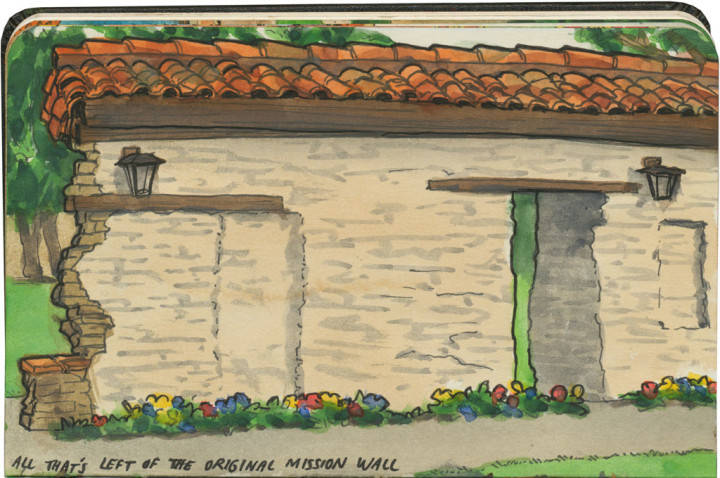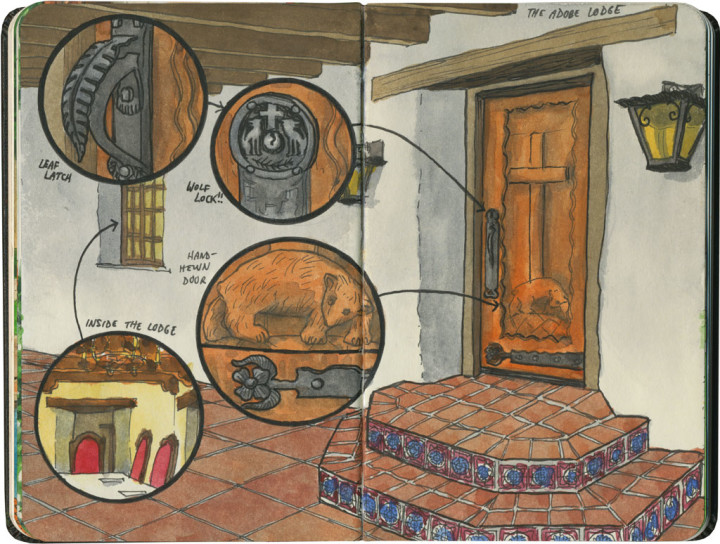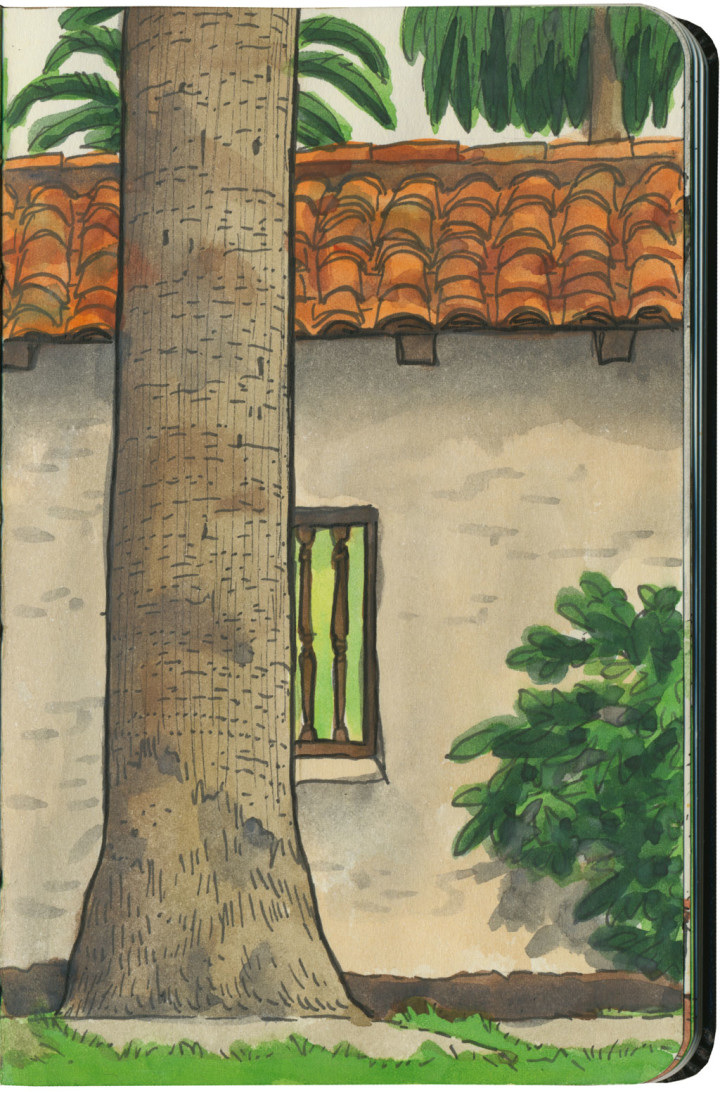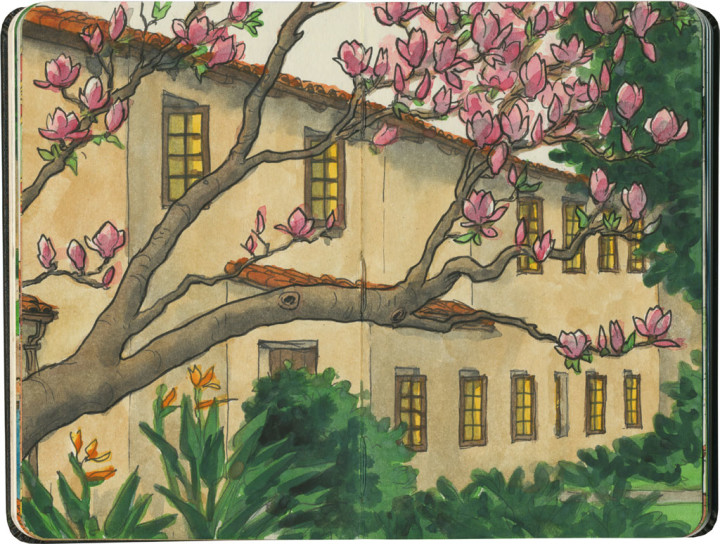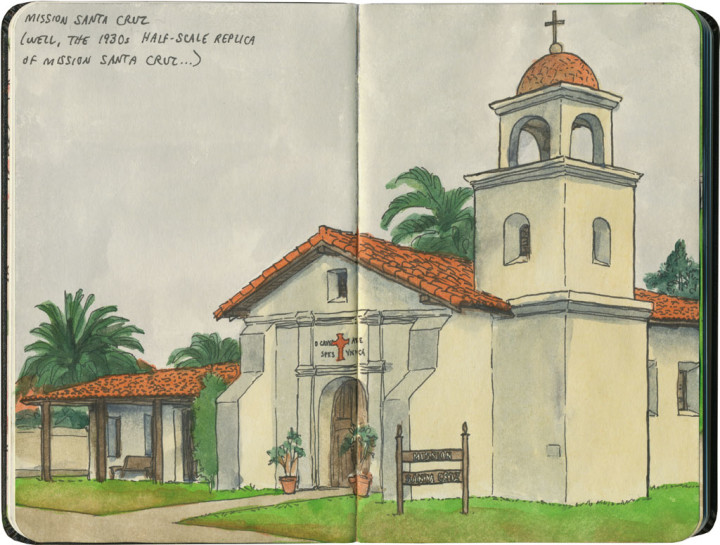This is the twenty-first and final installment of my Mission Mondays series, exploring all 21 Spanish Missions along the California coast. You can read more about this series, and see a sketch map of all the missions, at this post.
Here we are, at long last! The very last California mission, in all its (understated) glory.

The northernmost mission in the Alta California system was also the very last one founded—fitting, since the while the missions in the middle are a jumble of out-of-sequence dates, the southernmost was also the first.

Mission San Francisco Solano is located at the center of the town of Sonoma, California’s famous wine-country gem. In fact, the first vineyard in Sonoma Valley was planted by the mission priests, for producing their own sacramental wine. And every October there is still a “blessing of the grapes” ceremony on site.

In 1835 the mission was deconsecrated, and Commander Mariano Vallejo turned much of the site into a military garrison to defend the interests of the newly-independent country of Mexico (Alta California was part of the Viceroyalty of New Spain until 1821, and wasn’t ceded to the U.S. until the 1848 Treaty of Guadalupe Hidalgo). In the intervening years, the property was abandoned, fell into serious disrepair, and over time was gradually restored.

Today the mission is just one historic property among many in Sonoma, kitty-corner to the town plaza and surrounded by tidy streets and upscale shops. It’s hard to imagine what it must have been like before the valley was populated with modern residents and tourists—but it’s not hard to find the spirit of the place, and fall into a contemplative silence.
• • • • • • • • • • • • • • • • • • • • • • • • • • • • • • • • • • • • • • • • • • • • • • • • • • • • • •
That’s it! I hope you’ve enjoyed this virtual road trip with me. Now that we’ve visited all 21 missions, maybe it’s worth looking back at how far we’ve come. Here’s that map again:

And a list of all the posts for each site:
MIssion San Diego de Alcalá
Mission San Luis Rey de Francia
Mission San Juan Capistrano
Mission San Gabriel Arcángel
Mission San Fernando Rey de España
Mission San Buenaventura
Mission Santa Barbara
Mission Santa Inés
Mission La Purísima Concepción
Mission San Luis Obispo de Tolosa
Mission San Miguel Arcángel
Mission San Antonio de Padua
Mission Nuestra Señora de la Soledad
Mission San Carlos Borroméo del Río Carmelo
Mission San Juan Bautista
Mission de la Exaltación de la Santa Cruz
Mission Santa Clara de Asís
Mission San José
Mission San Francisco de Asís
Mission San Rafael Arcángel
Mission San Francisco Solano
Because I love travel stats, here are a few:
Miles traveled: Well, not counting the 1200 miles between San Diego and my house, nor any of the non-mission-related side trips I took along the way, I drove approximately 925 miles just between the 21 missions (I know my map says 600 miles, but modern highway routes and some required back-and-forth affected the actual driving distance).
Time period in which missions were founded: Between 1769 (San Diego) and 1823 (San Francisco Solano).
Number of missions where all or most of the structure is a 20th-century replica: 7 (All but one of those are in the northern half of the chain.)
Number of missions that still have consecrated churches or chapels on site: 18 (La Purísima, Santa Cruz and San Francisco Solano do not.)
Number of times I didn’t see a mission from the inside: 5 (Two were closed when I got there, one was in the middle of mass, one had a wedding going on, and another was hosting a quinceañera.)
Most touristy: San Juan Capistrano had the gift shop and theme-town thing down, but I saw the greatest number of actual tourists at Santa Barbara. There were gobs and gobs of them.
Least touristy: San Antonio de Padua, where I was the only one there—though La Soledad was a close second, most likely because it’s literally in a farm field and nearly unmarked.
Most underrated: This one’s hard, because almost all of them are underrated in some way. But I’m going to go with San Miguel, because it’s such a stunning place, and the adjacent freeway just sends people flying right on by.
Best architecture: Tie between San Juan Capistrano and Mission Carmel, but with a special shout-out to the Moorish design of San Gabriel—and to the folks at Mission San Jose for being sticklers in choosing a period-authentic replica over a glitzy showpiece.
Overall favorite mission: La Purísima. Hands down. But the runner-up remains San Juan Bautista, which was my first love.
Final thoughts:
The thing that most struck me is the contrast between the missions—not only the various architectural styles, but the varying states of repair and disrepair. I would love to see an integrated system like the National Parks System has, encouraging tourists to visit all 21 missions and share a common pool of resources, staff and funding for upkeep and repairs.
Whatever system there may or may not be in future, it doesn’t change the fact that all of the missions are worth visiting and preserving. I’d do the whole trip again in a heartbeat—and I hope I get the chance to do just that, someday.
